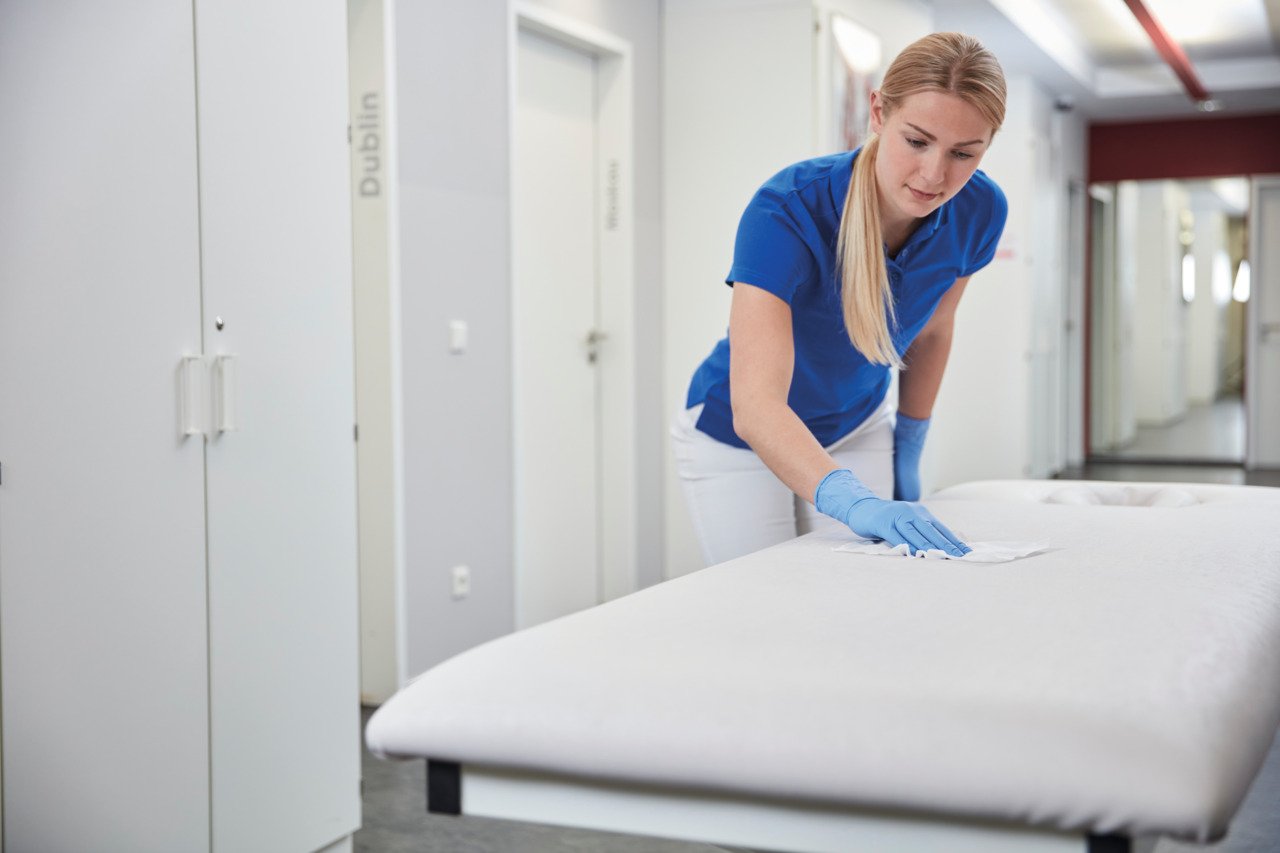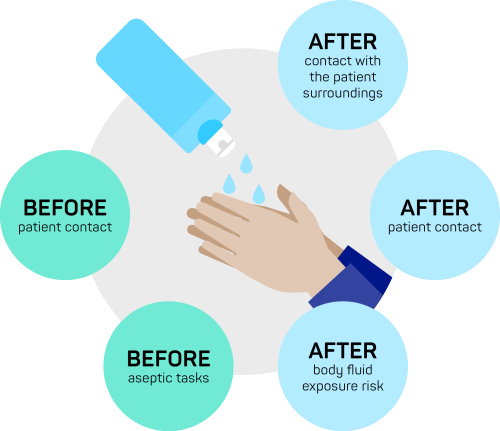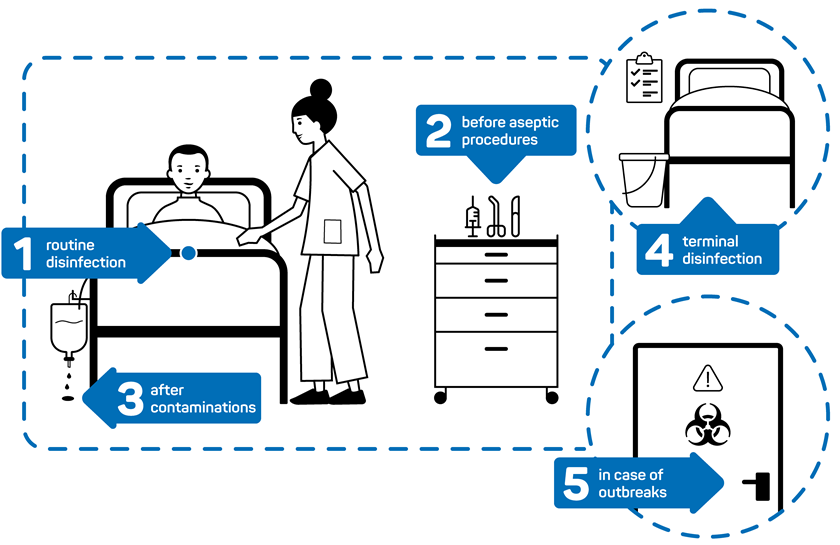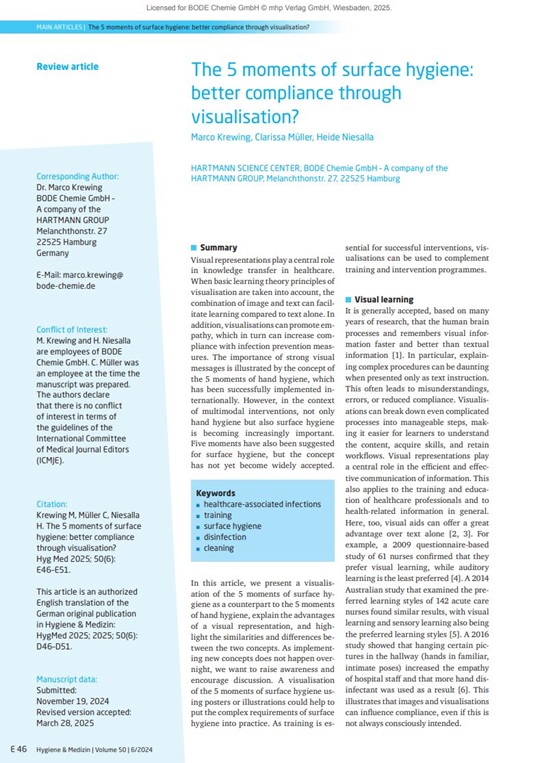HARTMANN SCIENCE CENTER


Successful visual representations facilitate the transfer of knowledge - also in the healthcare sector! The success of the 5 moments of hand hygiene [1] is not least due to the strong visual language. Five moments have also been proposed for surface hygiene [2] - so far only in text form and with little success. In order to promote the acceptance of surface hygiene as an important pillar of infection prevention, a recent article [3] now proposes the visualization of the 5 moments of surface hygiene.
The 5 moments of hand hygiene are divided into near-patient and far-patient moments and are process-oriented. All moments build on each other along a stringent path.

Compared to hand hygiene, the 5 moments of surface hygiene are more complex. They are not a sequence of events, but independent moments. The proposed visualization of the 5 moments of surface hygiene [3] deliberately changes the perspective compared to the standard presentation of the 5 moments of hand hygiene in order to differentiate the illustrations from each other. To keep the text short, moment 1, for example, summarizes the disinfection of surfaces close to patients and “high-touch” surfaces as routine disinfection.

Employee habits can only be changed gradually. Acceptance of surface hygiene is also hindered by the fact that cleaning work and cleaning staff have so far been little noticed. In practice, the hygiene plan and risk assessment of the clinics determine which work steps fall under the 5 moments of surface hygiene. The frequency of cleaning and disinfection also differs between areas with different levels of risk. The visualization of the 5 moments of surface hygiene can help to transfer the complex requirements of surface hygiene into practice. Visualizations should also be used as a supplementary tool as part of a comprehensive training and intervention program.
